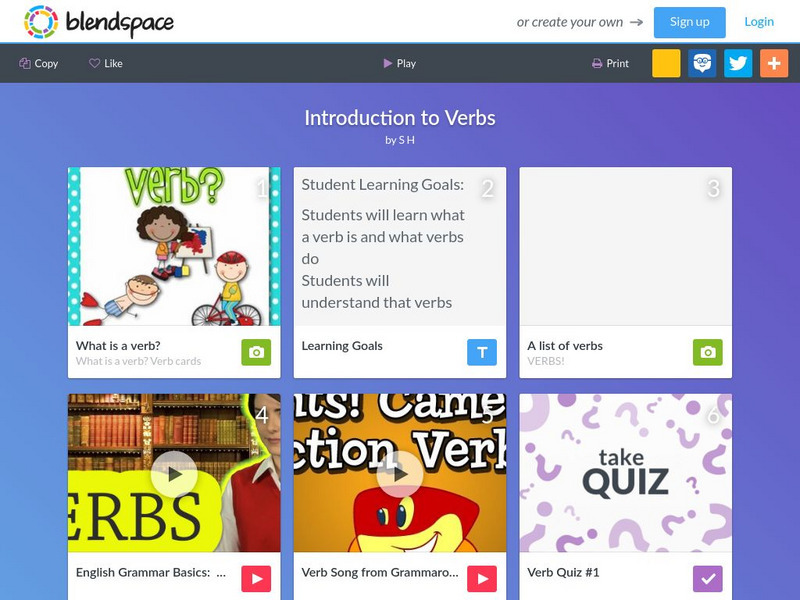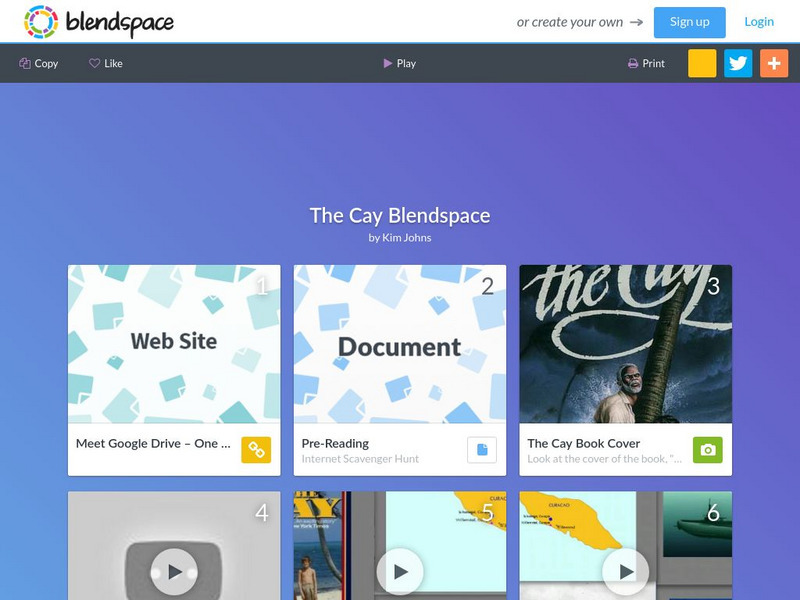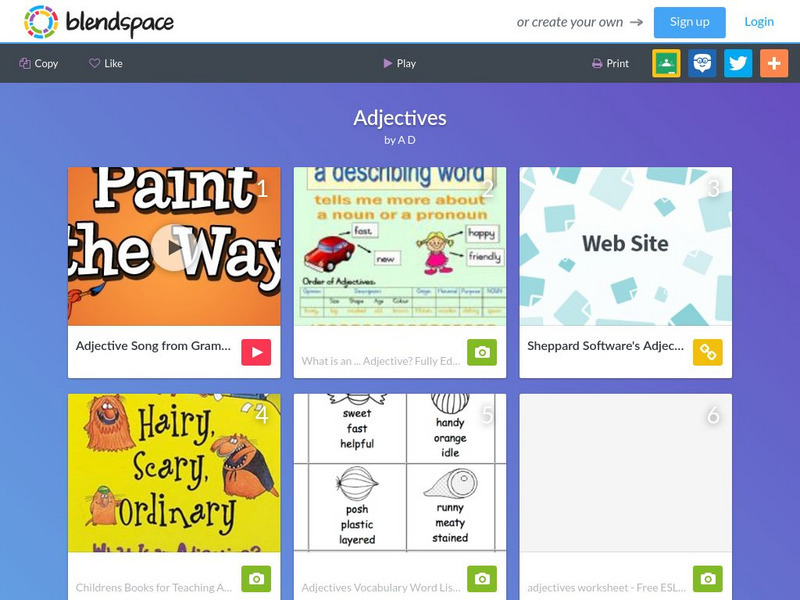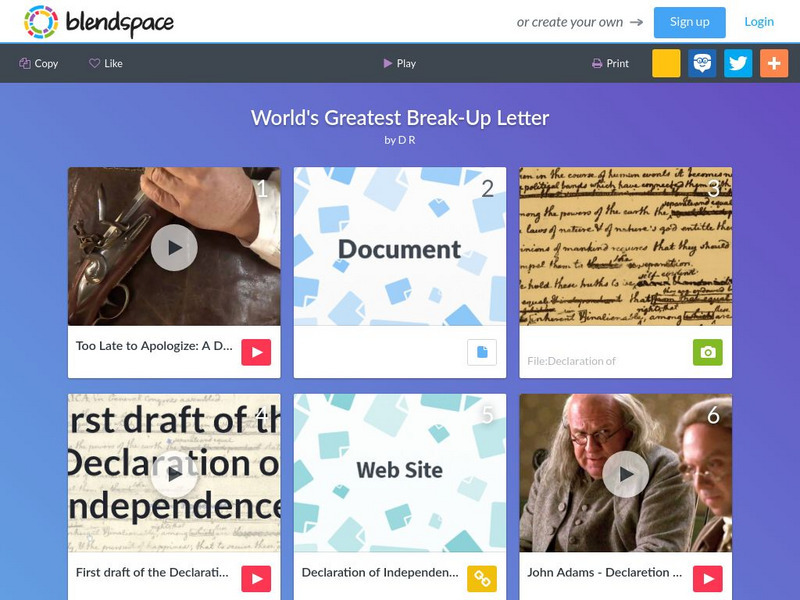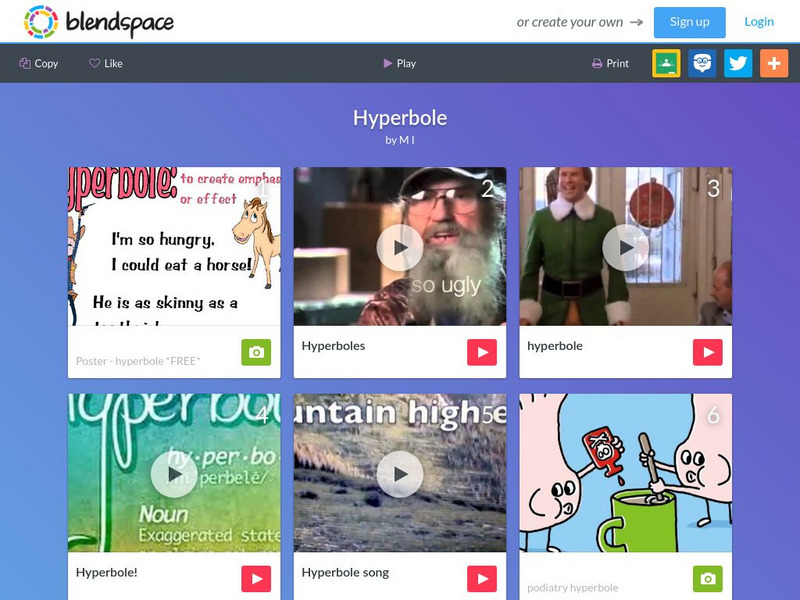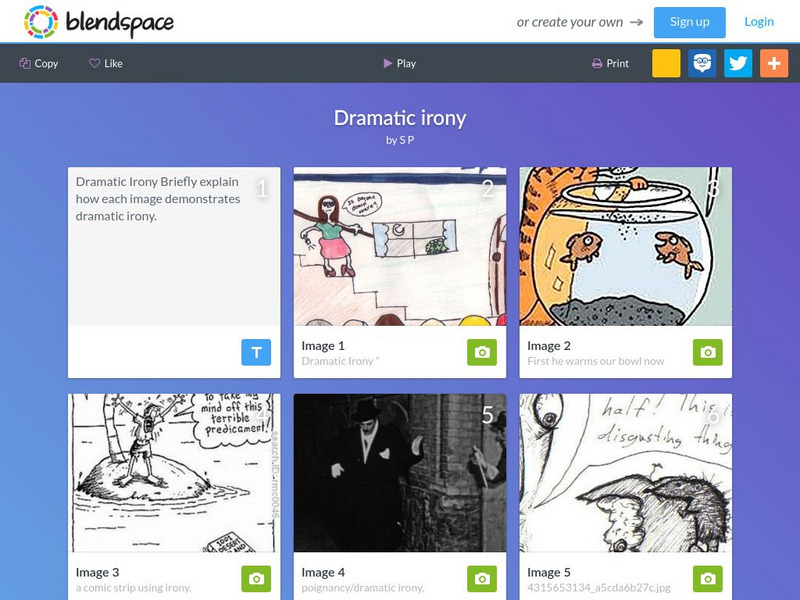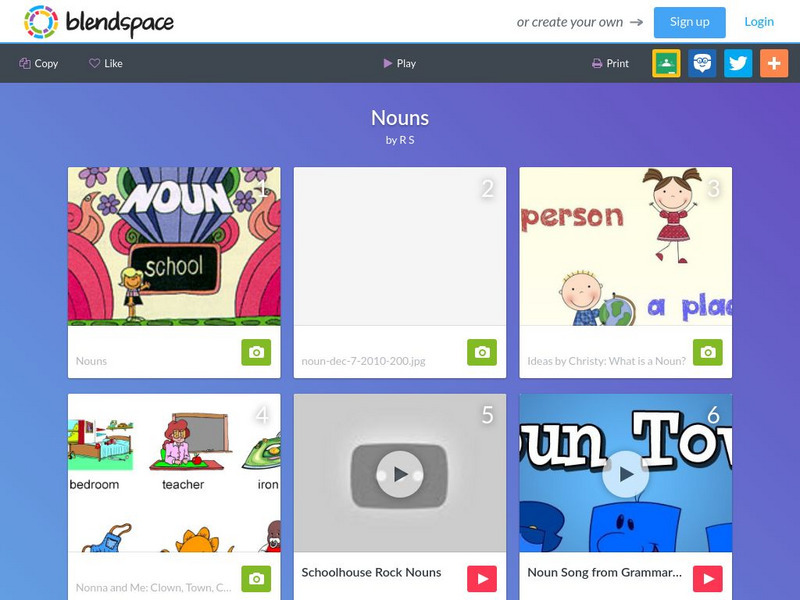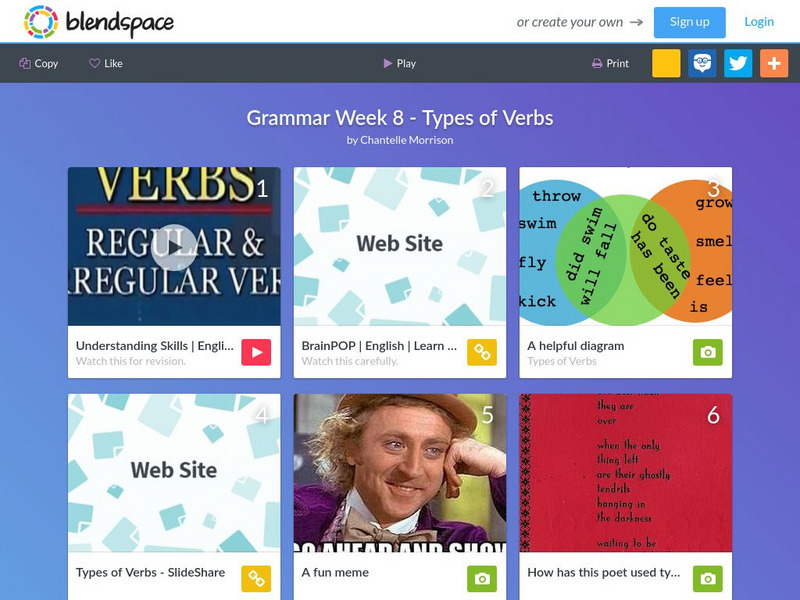TES Global
Blendspace: Modal Verbs
A twelve-part learning module to use while teaching modal verbs. Links include an images, charts, and videos on modal verbs.
TES Global
Blendspace: Introduction to Verbs
An eight-part learning module with links to videos, websites, songs, charts, images, and quizzes to learn all about verbs and how they are used in sentences.
TES Global
Blendspace: The Cay Blendspace
A twenty-five-part learning module to use while teaching Theodore Taylor's novel The Cay. Links include an introductory PowerPoint and pre-reading scavenger hunt, a book talk by Theodore Taylor, and videos for use with each chapter.
TES Global
Blendspace: Similes and Metaphors
An eighteen-part learning module with links to videos, charts, and images to teach similes and metaphors.
TES Global
Blendspace: Adjectives
An eight-part learning module with links to videos, websites, learning games, charts, and images to learn all about adjectives and how they are used in sentences.
TES Global
Blendspace: Background for a Christmas Carol
A six-part learning module with links to videos, websites, and a picture providing information about Charles Dickens and Victorian England.
TES Global
Blendspace: Nouns
An eight-part learning module with images, charts, links, exercises, and videos filled with explanations and examples of different types of nouns.
TES Global
Blendspace: La Figurative Language: Alliteration
A six-part learning module with images, charts, and videos filled with explanations and examples of alliteration.
TES Global
Blendspace: English for Kids: Phonics
Seven videos, charts, and images the teach students the alphabet and letter sounds to introduce students to phonics.
TES Global
Blendspace: Runners Active Reading Process
A nine-part learning module on using the acronym RUNNERS to learn active reading strategies through text, videos, a PowerPoint, a web link and a quiz.
TES Global
Tes: Romeo & Juliet: Students Direct the Fight Scene
[Free Registration/Login Required] This is a printable learning exercise to help students think about how they would direct the fight scene in Shakespeare's Romeo and Juliet. Students answer questions about how and why four of the...
TES Global
Blendspace: World's Greatest Break Up Letter
Work through twenty-four links to websites, videos, images, and activities to learn about the Declaration of Independence and how it came to be.
TES Global
Blendspace: 3rd Grade Battle Books
Follow links to book-talk videos and descriptions of twelve different books appropriate for third graders.
TES Global
Blendspace: Hyperbole
Work through fifteen links to images, videos, and activities to learn about hyperbole.
TES Global
Blendspace: Ri/rl 5.6 Point of View
Work through twenty-two links to pictures, charts, and videos to learn more about point of view in both informational and literary texts.
TES Global
Blendspace: Dramatic Irony
Work through links to six images that demonstrate dramatic irony.
TES Global
Blendspace: Persuasive Writing
Work through nine links to videos, images, and graphic organizers to learn about persuasive writing.
TES Global
Blendspace: Romeo and Juliet
A learning module with thirty-eight links to websites, images, videos, and activities for use while reading William Shakespeare's play Romeo and Juliet.
TES Global
Blendspace: La Figurative Language Hyperbole
Work through six links to images, videos, and activities to learn about hyperbole.
TES Global
Blendspace: Grammar Week 8 Types of Verbs
Work through six links to images, charts, websites, and videos to learn about different types of verbs.
TES Global
Blendspace: Before We Read the Great Gatsby
Follow twelve links to videos, websites, images, and activities to prepare you for reading The Great Gatsby by F. Scott Fitzgerald.
TES Global
Blendspace: Space Exploration 5 Paragraph Persuasive Essay
Learn to write a five-paragraph persuasive essay by working through six links to videos, graphic organizers, and activities on space exploration.
TES Global
Blendspace: Asking for Recommendations (With Examples)
Asking for recommendations is sometimes difficult. Follow the eighteen links in this learning module to learn how to do it correctly. Several examples are provided.



